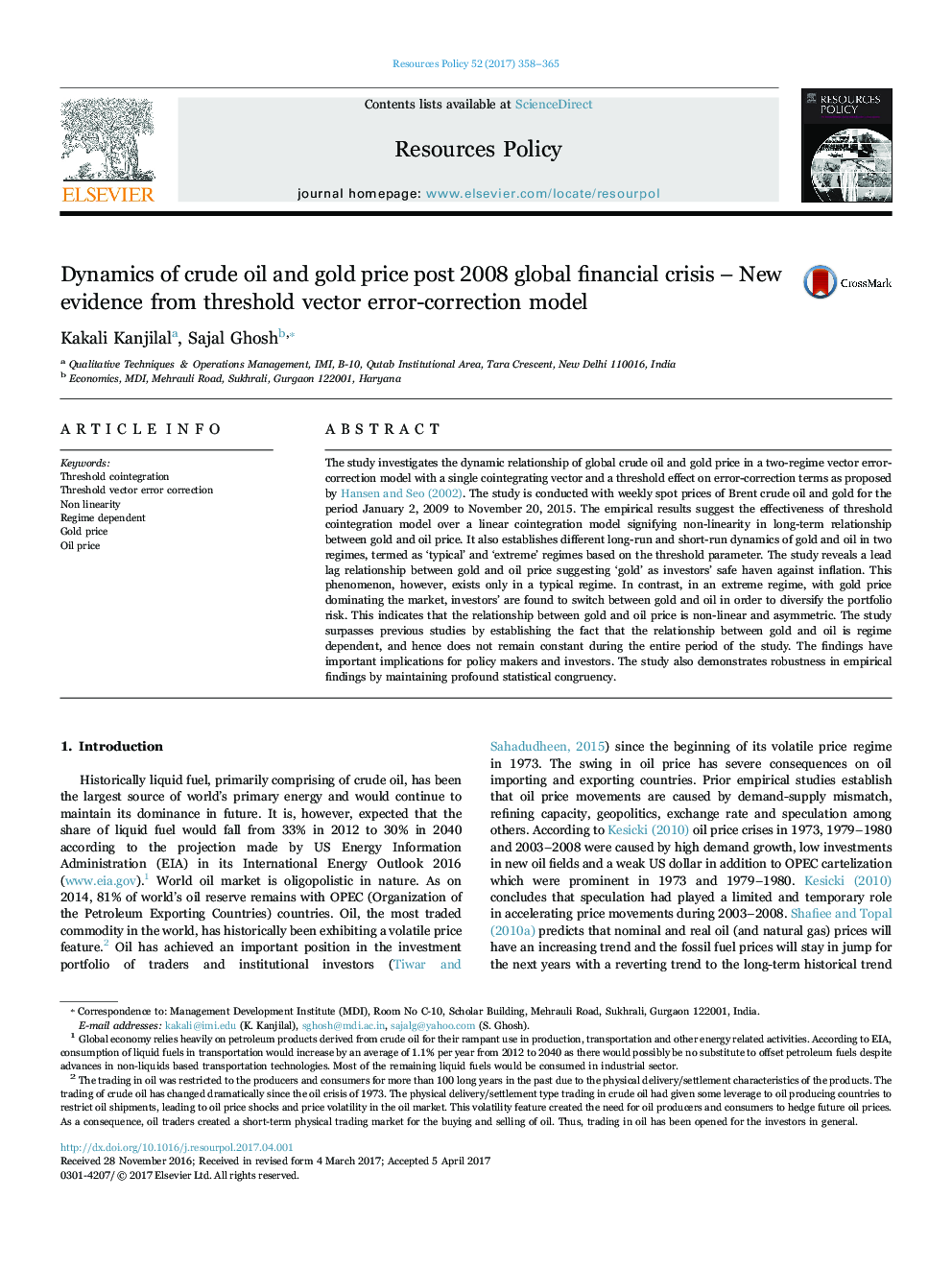| Article ID | Journal | Published Year | Pages | File Type |
|---|---|---|---|---|
| 5104223 | Resources Policy | 2017 | 8 Pages |
Abstract
The study investigates the dynamic relationship of global crude oil and gold price in a two-regime vector error-correction model with a single cointegrating vector and a threshold effect on error-correction terms as proposed by Hansen and Seo (2002). The study is conducted with weekly spot prices of Brent crude oil and gold for the period January 2, 2009 to November 20, 2015. The empirical results suggest the effectiveness of threshold cointegration model over a linear cointegration model signifying non-linearity in long-term relationship between gold and oil price. It also establishes different long-run and short-run dynamics of gold and oil in two regimes, termed as 'typical' and 'extreme' regimes based on the threshold parameter. The study reveals a lead lag relationship between gold and oil price suggesting 'gold' as investors' safe haven against inflation. This phenomenon, however, exists only in a typical regime. In contrast, in an extreme regime, with gold price dominating the market, investors' are found to switch between gold and oil in order to diversify the portfolio risk. This indicates that the relationship between gold and oil price is non-linear and asymmetric. The study surpasses previous studies by establishing the fact that the relationship between gold and oil is regime dependent, and hence does not remain constant during the entire period of the study. The findings have important implications for policy makers and investors. The study also demonstrates robustness in empirical findings by maintaining profound statistical congruency.
Related Topics
Physical Sciences and Engineering
Earth and Planetary Sciences
Economic Geology
Authors
Kakali Kanjilal, Sajal Ghosh,
